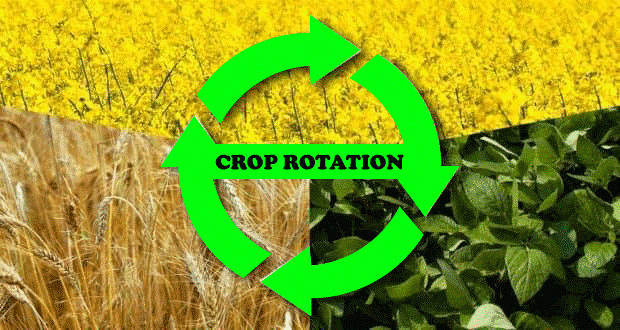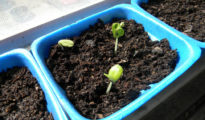The health of our soil is inextricably linked to the quality and abundance of the food we produce. Among the many methods developed to sustain and improve soil health, crop rotation stands out as a time-tested and widely recognized technique. In this post, we'll delve deep into understanding the concept of crop rotation and how you can implement it to enhance the health of your soil.

What is Crop Rotation?
At its simplest, crop rotation is the practice of growing a series of dissimilar types of crops in the same area in sequential seasons. This method breaks the monoculture paradigm where the same crops are grown year after year in the same place.
Benefits of Crop Rotation:
- Disease and Pest Management: Pests and diseases are often specific to certain crops. Changing crops yearly interrupts the life cycles of these pests.
- Soil Fertility Enhancement: Different crops extract different nutrients from the soil. Rotating crops ensures a balanced nutrient extraction and sometimes even replenishment.
- Erosion Control: Some crops, like grasses, reduce soil erosion with their dense root systems.
- Improved Soil Structure: Certain crops, like legumes, improve soil structure, making it more aerated and better at holding water.
Implementing Crop Rotation for Soil Health
To successfully implement crop rotation, a systematic approach is needed:
- Assess Your Soil: Before planning a rotation, understand your soil. What is its pH? What are its primary nutrient levels? Are there any deficiencies?
- Understand Your Crops: Know what nutrients each crop extracts from the soil and what they might contribute. For example, legumes fix nitrogen, thus adding it to the soil.
- Plan Your Rotation: A simple 4-year rotation might look like:
- Year 1: Leafy vegetables (e.g., lettuce, spinach)
- Year 2: Fruit bearers (e.g., tomatoes, peppers)
- Year 3: Root crops (e.g., carrots, potatoes)
- Year 4: Legumes (e.g., beans, peas)
- Practice Good Record Keeping: Log what you plant every year, how the crops performed, and any issues faced. This historical data is crucial for refining your rotation plan.
- Consider Cover Crops: In between main crops or during off-seasons, consider planting cover crops. These crops, like clover or rye, can suppress weeds, manage soil erosion, and improve soil structure.
Challenges of Crop Rotation
While crop rotation offers numerous benefits, it isn’t without challenges:
- Economic Considerations: Some crops are more profitable than others. Diversifying crops might mean that a farmer doesn't always grow the most lucrative crops every year.
- Requires Knowledge: Effective rotation requires a good understanding of local pests, diseases, and soil conditions.
- Labor and Equipment: Different crops might require different planting, care, and harvesting equipment and techniques.
Modern Advancements in Crop Rotation
Technology and research have been bringing advancements to this age-old practice:
- Precision Agriculture: Satellite and drone imaging can help farmers understand soil health at a micro-level, aiding in making informed rotation decisions.
- Disease Prediction Models: Using data analytics, farmers can predict potential disease outbreaks and rotate crops accordingly.
- Community Knowledge Sharing: Online platforms allow farmers worldwide to share their successes and failures, refining crop rotation strategies at an accelerated pace.
The Science Behind Crop Rotation
Crop rotation is not merely a traditional practice; it’s deeply rooted in science.
- Nutrient Uptake: Different crops have varying nutrient demands. Continuous planting of one type can deplete the soil of specific nutrients, affecting yields in the long term. By rotating crops, nutrients are extracted in a more balanced manner. For instance, while corn (a heavy nitrogen user) might deplete nitrogen, following it with soybeans (which fix nitrogen) can help replenish it.
- Biodiversity: A monoculture (continuous cropping of one type) can diminish soil biodiversity. Diverse soil microorganisms, including bacteria, fungi, and other microbes, play vital roles in soil health and plant nutrition. Changing crops helps maintain this microbial diversity.
The Role of Cover Crops in Crop Rotation
Integrating cover crops into a rotation system can further amplify the benefits.
- Soil Protector: Cover crops protect the soil from direct sun, reducing water evaporation and preventing soil erosion from wind and rain.
- Organic Matter: As cover crops die and decompose, they contribute organic matter to the soil, aiding in water retention and nutrient provision.
- Weed Suppression: They can outcompete weeds, reducing the need for chemical weed control.
Economic Benefits of Crop Rotation
Beyond the soil, the economic implications of crop rotation are significant.
- Reduced Inputs: Healthier soil reduces the need for fertilizers. Also, breaking pest and disease cycles can decrease the need for pesticides.
- Diverse Income Streams: By diversifying crops, farmers can insulate themselves from price fluctuations in a particular crop market.
Strategies for Effective Crop Rotation
- Interplanting and Companion Cropping: Instead of rotating crops yearly, some farmers opt to interplant—growing two or more crops simultaneously in proximity. This method can provide immediate benefits similar to longer-term rotation.
- Length of Rotation: While a 4-year rotation is standard, some farmers opt for longer rotations, bringing in a wider variety of crops, which can be especially beneficial in organic farming systems.
Challenges and Solutions in Crop Rotation
- Planning Complexity: While crop rotation can seem daunting in its planning phase, using modern farm management software can simplify this. These tools can help forecast yields, track crop histories, and even suggest optimal rotations based on current soil health data.
- Climate Considerations: As global weather patterns shift, certain crops may no longer be viable in traditional growing areas. Adaptive rotation strategies, which factor in these changing conditions, are essential.
The Future of Crop Rotation
Emerging research in agroecology is showing potential synergies between specific crops. This knowledge, combined with advancements in precision agriculture, might soon allow us to create highly optimized rotation schedules tailored to minute soil variations within a single farm.
In essence, crop rotation is both an art and science—one that's crucial for the future of sustainable agriculture. It represents a harmonious balance between understanding nature's cycles and leveraging human ingenuity to maximize both soil health and agricultural productivity.



















